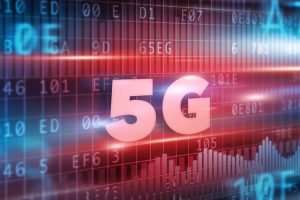Power set to be key battleground for 5G

Although energy efficiency was important in previous generations of mobile communications standards, such as UMTS and LTE, far greater emphasis will be placed upon this as a key performance metric in the forthcoming 5G standard. With each new generation of mobile communication technology, the energy consumed by the network has grown significantly, as the number of subscribers and the level of carried data traffic have both continued to rise, despite the consumption of the equipment being utilized actually decreasing slightly. If this dynamic was to continue then migration to 5G would be difficult from both an economic and an ecological standpoint. Consequently, energy efficiency will be one of the highest priorities for the 5G era.
Next generation networks will be expected to support dramatically higher user experienced data rates – up to 1 Gbps in some specific areas, such as indoor hotspots, and 50 Mbps for everywhere under 5G coverage – and a far larger number of connected devices. Some estimates expect up to 50 billion in total, though most agree it will take several years before this level is reached. The volume of traffic will grow as a wider array of applications emerge that are reliant on elevated data rates and the content that users want to transfer over the network keeps expanding. Increased use of video streaming, plus new services such as those based on augmented reality, will contribute heavily to this. Further down the line,  industrial, automotive and medical applications are certain to ramp up the data overheads still higher.
industrial, automotive and medical applications are certain to ramp up the data overheads still higher.
Data growth and energy use
Among the fundamental objectives that have been defined for the 5G standard is for the network’s data capacity to go up 1,000 fold during the course of the next decade. The intention is to simultaneously achieve a 50% reduction in the global network’s total energy usage, including that of existing legacy technologies. For this to happen, clearly the overall energy efficiency of the network has to improve substantially.
Reducing the ongoing operational expenses of the network and environmental footprint, such as CO2 emissions, will be among the main motivations spurring operators to move to 5G, and power consumption is a key area where cost savings need to be witnessed. As well as the benefits experienced by the operator, there is a need to improve the user experience too. The goal here will be to allow smartphones to connect to the network while managing to run for much longer periods between recharges – thereby offering greater convenience for mobile subscribers.
Multiple use cases
One element that makes 5G quite different from previous mobile generations is that its operational characteristics will need to satisfy a plethora of different, often quite unrelated, demands. This time it is not simply about raising the data capacity (though that will be important of course) but also about supporting new communication use cases.
The emergence of the Internet of Things (IoT), in particular, will have major implications, with many IoT deployments having their own distinct set of requirements. Remote sensor nodes, responsible for monitoring a certain parameter in smart cities for example, or industrial M2M terminals, may need the massive connectivity that 5G affords, but a high data rate will not be of great value in this context. One of the most significant factors here will be keeping the power consumption to an absolute minimum. These sensor nodes will only be operational for a very small proportion of the time and the data they need to transmit will be very modest. 5G must be able to accommodate the minimal throughput and irregular connectivity that characterises this type of use case, while operating within the power constraints of sensor nodes whose batteries must last up to 15 years.
New network structures
The way that 5G networks are constructed will be essentially different from the approach of previous generations. These new networks will rely much more on the deployment of pico, femto or moving cells, which will effectively mean that the user is brought a lot closer to the point of transmission and the power needed to transmit the signal will consequently be lowered. Utilisation of the Cloud is also expected to be of great importance. Virtualization of network functions promises to deliver both increased flexibility and efficiency. This will mean that rather than transmission being the dominant component of overall power consumption, there will be a shift to the more manageable computational power dimension (though this will also present the industry with certain challenges).
The implementation of massive MIMO (multiple-input, multiple-output) transmission techniques will also prove to be advantageous – compensating path loss and enabling stronger signals while consuming less energy. This, along with adaptive beamforming, could help to counter the limited range of mm wavelength transmission (which will begin to be employed to boost data rates). Having enhanced the power performance of the underlying network technology, there will subsequently be an opportunity to make greater use of alternative energy sources, such as photovoltaics, to supplement the conventional power supply.
5G needs to furnish operators with a business model that is sustainable in terms of the financial investment required and the day-to-day running costs, as well as in relation to its long term effect on the environment – so that international legislative guidelines can be met. The technical obstacles that operators face in respect to power efficiency will be challenging but are not insurmountable. Improved energy efficiency needs to be a consideration of each constituent part of the proposed network technology, covering everything from how the system architecture is implemented right through to facets of functional design. This will allow operators to obtain the system-wide energy savings they need.
As an organisation working to define global standards that enable more productive and environmentally sustainable technology developments, ETSI is focussing closely on energy efficiency within the next generation communication networks. ETSI has recently embarked on an investigation into possible new metrics for energy efficiency within 5G systems. The results are due to be published in a Technical Report towards the end of 2017. Meanwhile, 3GPP has been actively involved in a study of energy efficiency of mobile networks taking in the implications of various deployment scenarios, operating conditions and coordinated energy saving between different parts of the network. ETSI and 3GPP are also heavily engaged in determining the exact system architecture and functional requirements of the 5G standard and methods of monitoring and controlling power consumption will be at the heart of this.
by Mauro Boldi & Xiaoboa Chen, ETSI









